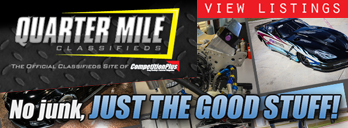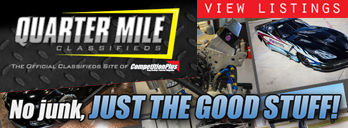CP MOTORSPORTS – MONTE DUTTON: ROSIN, RESIN, TOMATOES, TOHMAHTOES
Click here to follow us on Twitter @circletrackplus Click here to like us on Facebook

Rain is awful.
At this point, someone is reading this and thinking, ah, but we need it.
I don’t like a drought any more than the next guy. If it didn’t rain, I couldn’t mow the lawn. I’m just not fond of the recent timing. They don’t need the rain in Louisiana right now. They didn’t need the rain in Bristol. That was a great race strung out over a night, a day and another night.
Now I’m writing this column a day early because there’s an IndyCar race going on at Pocono. Right now, on my TV, race cars and loose parts are strewn across pit road. The race is 200 laps. The TV says 67 have been run.
That’s not the rain’s fault. Then again, it’s Monday. NASCAR was strewn over several channels, and incredibly, occupied roughly as much time as the Olympics, an inordinate amount of it involving Parker Kligerman.
Bristol is back! That’s when it’s dry. The few, the proud, those who came to work this morning disguised as zombies, watched Kevin Harvick win the best Bristol race in years.
Many moons ago, the brainiacs at Bristol thought they could make the track even better. They ground the concrete in order to taper the banking, the better to make passing easier, so, naturally, it got harder. Instead of the bottom line being the fast way, the top line became the fast way, and the problem up high is that the nudge that moves a car up the track down low puts it into the wall up high, and it’s as hazardous for the nudger as the nudge.
This time BMS came up with some mysterious substance that baffled the NASCAR media, but what was important was that its application to the low lane in the turns gave Bristol its first multi-lane racing since concrete replaced asphalt 24 years ago.
As I patiently finger-pushed the Twitter feed late last week, I saw references to syrup, goop, rosin and resin. Many people, particularly pitchers of baseballs, l pronounce “resin” as “rosin,” so that mistake was easily deciphered. It evolved into HVT, which, should positive results continue to be forthcoming, NASCAR will eventually claim to have invented or discovered.
Bristol, not NASCAR, found it, and it wasn’t in a chemistry lab secretly maintained by general manager Jerry Caldwell but rather outside the so-called Last Great Colosseum at the Thunder Valley drag-racing showcase. Drag racers know a little about traction.
Once upon a time, “sealers” were used at Richmond and New Hampshire, though the latter track was particularly prickly about the use of that term. At Darlington in the 1960s and ‘70s, officials coated the old egg in something they called “bear grease” and they didn’t mind the use of that term at all.
It was a different age.
NASCAR didn’t invent SAFER barriers or HANS devices, either. It’s just big enough for a media barrage to propagandize.
Then Brian France invented fuel injection and ethanol …
The real surprise of Bristol’s at-long-last-successful tinkering with its surface is that the Lords of Daytona Beach let them try it.
Perhaps it was, uh, incognito.




